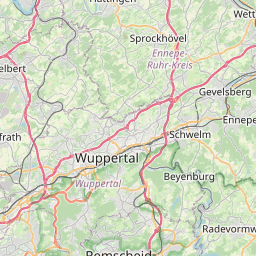Description: Das Projekt "Standardisierung von Interfaces und Funktionalitäten für die IoT-basierte Gebäudeautomation" wird/wurde ausgeführt durch: Rheinisch-Westfälische Technische Hochschule Aachen University, E.ON Energy Research Center, Lehrstuhl für Gebäude- und Raumklimatechnik.Der Gebäudebereich entwickelt sich zunehmend in Richtung IoT und stellt ein Marktsegment mit erheblichem Potential dar. Die Vielzahl technischer Lösungen in der IoT-Gebäudeautomation bietet eine große Flexibilität, birgt andererseits aber die Gefahr einer erhöhten Komplexität und eingeschränkten Interoperabilität, zumal bisher keine Standardisierungen in diesem Bereich vorliegen. So sind die häufigsten Fragen und a. welches Datenformat zu wählen ist, welche Schnittstellen bereitgestellt werden müssen und welche Funktionalitäten abgedeckt sein sollten. Das Ziel dieses Projekts ist daher die Erarbeitung einer Standardisierung für IoT-Middleware mit Blick auf die erforderlichen Schnittstellen und Funktionalitäten. Die IoT-Middleware ist hierbei das Bindeglied und Normalisierungsschicht zwischen der Feldebene und der Applikationsebene. Zur Standardisierung der IoT-Middleware sollen die Anforderungen und der an ihr angreifenden Kommunikationskanäle konkret herausgearbeitet werden, sodass die Middleware sowohl die technischen Geräte also auch die Akteure aus dem Planungs,- Bau- und Inbetriebnahmeprozess ganzheitlich berücksichtigt. So sollen z.B. Daten aus dem Planungsprozess in das Datenmodell der IoT-Middleware integriert werden und die einzelnen Feldgeräte in der Inbetriebnahme sich automatisch mit der entsprechenden Instanz in der Middleware verbinden können. Andererseits sind ebenso Standards für die Kommunikationskanäle zur IoT-Middleware festzulegen. Hierfür werden funkbasierte und kabelgebundene Kommunikationsprotokolle auf ihre spezifischen Vor- und Nachteile für die Gebäudeautomation hin untersucht. Gerade bei IoT-Systemen müssen die einzelnen Geräte und Protokoll vertrauenswürdig und vor externen Angriffen geschützt sein. Die Überprüfung der Geräteintegrität soll daher als Bestandteil der Middleware entwickelt werden. Die erarbeiteten Standards sollen anschließend in einer Pilotanwendung implementiert und bewertet sowie in Normungsausschüssen eingebracht werden
Types:
SupportProgram
Origins:
/Bund/UBA/UFORDAT
Tags:
Aachen
?
Gebäude
?
Gebäudetechnik
?
Automatisierung
?
Datenmodell
?
Technisches Risiko
?
Standardisierung
?
Region:
Nordrhein-Westfalen
Bounding boxes:
6.76339° .. 6.76339° x 51.21895° .. 51.21895°
License: cc-by-nc-nd/4.0
Language: Deutsch
Organisations
-
PHOENIX CONTACT Deutschland GmbH (Mitwirkende)
-
PHYSEC GmbH (Mitwirkende)
-
Rheinisch-Westfälische Technische Hochschule Aachen University, E.ON Energy Research Center, Lehrstuhl für Gebäude- und Raumklimatechnik (Betreiber*in)
-
Umweltbundesamt (Bereitsteller*in)
Time ranges:
2023-03-01 - 2026-02-28
Alternatives
-
Language: Englisch/English
Title: Standardization of interfaces and functionalities for IoT-based building automation
Description: The building sector is increasingly developing in the direction of IoT and represents a market segment with considerable potential. The multitude of technical solutions in IoT building automation offers a great deal of flexibility, but on the other hand poses the risk of increased complexity and limited interoperability, especially since there have been no standardizations in this area to date. Thus, the most common questions include which data format to choose, which interfaces to provide, and which functionalities should be covered. The goal of this project is therefore to develop a standardization for IoT middleware with regard to the required interfaces and functionalities. Here, the IoT middleware is the link and normalization layer between the field level and the application level. In order to standardize the IoT middleware, the requirements and the communication channels to which it is exposed are to be worked out in concrete terms so that the middleware takes into account both the technical devices and the actors from the planning, construction and commissioning process in a holistic manner. For example, data from the planning process should be integrated into the data model of the IoT middleware and the individual field devices in commissioning should be able to connect automatically with the corresponding instance in the middleware. On the other hand, standards must also be defined for the communication channels to the IoT middleware. For this purpose, radio-based and wired communication protocols are examined for their specific advantages and disadvantages for building automation. Particularly in IoT systems, the individual devices and protocol must be trustworthy and protected against external attacks. The verification of device integrity is therefore to be developed as part of the middleware. The standards developed are then to be implemented and evaluated in a pilot application and introduced into standardization committees.
https://ufordat.uba.de/UFORDAT/pages/PublicRedirect.aspx?TYP=PR&DSNR=1119605
Status
Quality score
- Overall: 0.46
-
Findability: 0.52
- Title: 0.00
- Description: 0.13
- Identifier: false
- Keywords: 1.00
- Spatial: RegionIdentified (1.00)
- Temporal: true
-
Accessibility: 0.67
- Landing page: Specific (1.00)
- Direct access: false
- Publicly accessible: true
-
Interoperability: 0.00
- Open file format: false
- Media type: false
- Machine-readable metadata: false
- Machine-readable data: false
-
Reusability: 0.67
- License: ClearlySpecifiedAndFree (1.00)
- Contact info: false
- Publisher info: true
Accessed 1 times.






